DSSV
Deep Space Science VesselSpace Architecture
10 weeks
NASA Internship

Background
In the summer of 2020, I interned at the Center for Design and Space Architecture (CDSA), NASA’s conceptual, human centered design studio. Over the ten week internship Idesigned, modeled, and rendered the first full concept of the Deep Space Science Vessel (DSSV).
Team
2x Designers
1x Director of the Center for Design and Space Architecture
Team
2x Designers
1x Director of the Center for Design and Space Architecture
Goals & Role
The goal of this project was to create a realistic vision of what a vessel with a 48 crew-member and 5+ year mission scope looks like.
As a team we collaborated on the overall layout of the DSSV decks, the ECLSS system and the methods for crew translation through the vessel. I worked to ensure that the designs and layouts of each deck were consistent with each other and that each area took into consideration the multiple types of human to human, human to structure, and human to technology interactions that would occur on a daily basis.
My primary focus was on the workout nodes, hygiene deck, galley, mission operations node, crew breakout meeting spaces, life science deck, hatch interfacing, and medical deck. In each of these areas I incorporated existing technologies while keeping human needs at the forefront of my design process.
As a team we collaborated on the overall layout of the DSSV decks, the ECLSS system and the methods for crew translation through the vessel. I worked to ensure that the designs and layouts of each deck were consistent with each other and that each area took into consideration the multiple types of human to human, human to structure, and human to technology interactions that would occur on a daily basis.
My primary focus was on the workout nodes, hygiene deck, galley, mission operations node, crew breakout meeting spaces, life science deck, hatch interfacing, and medical deck. In each of these areas I incorporated existing technologies while keeping human needs at the forefront of my design process.
Publication
Final report on the vehicle design & the benefit of human centered design practices is published in NASA’s NTRS. Link to full report
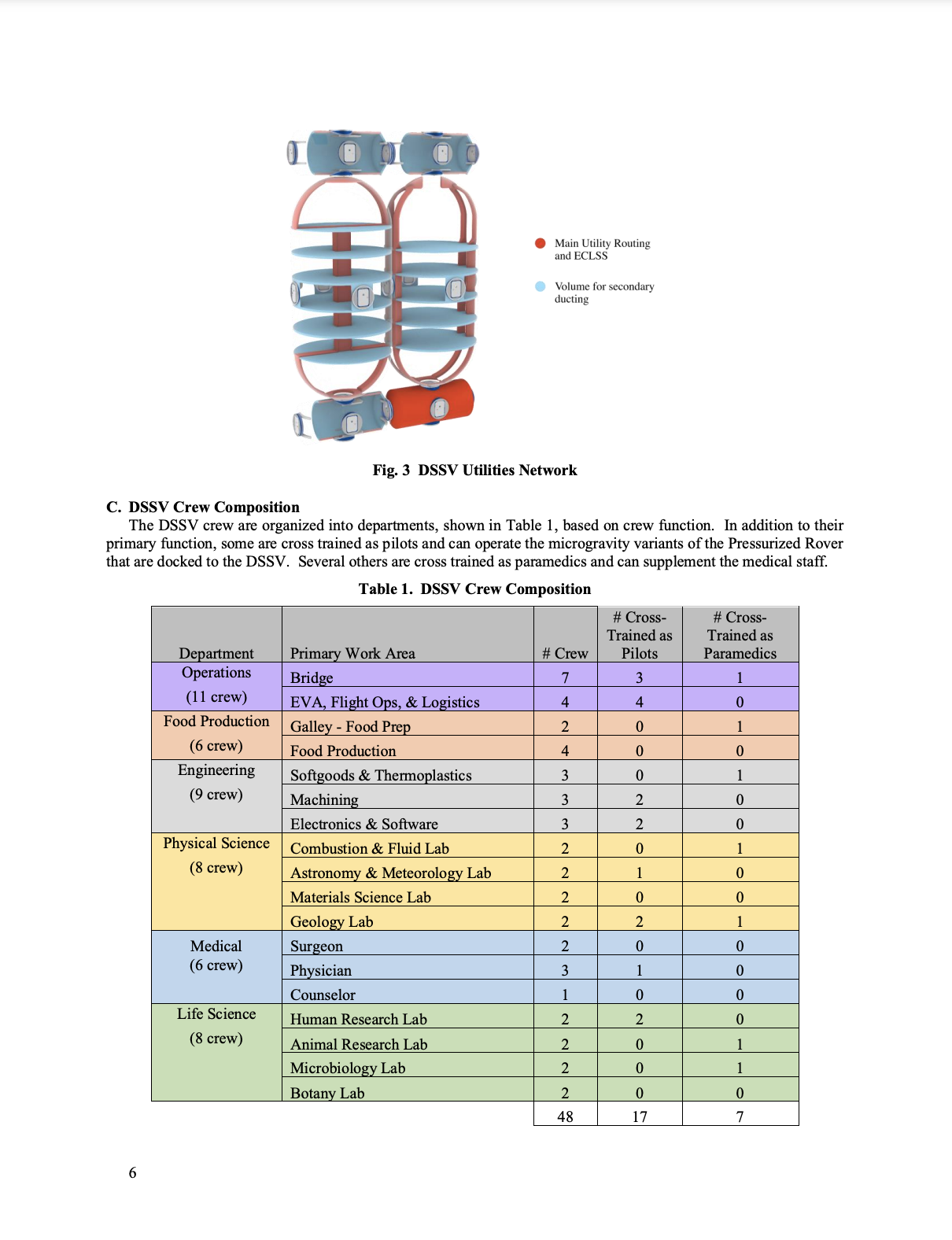
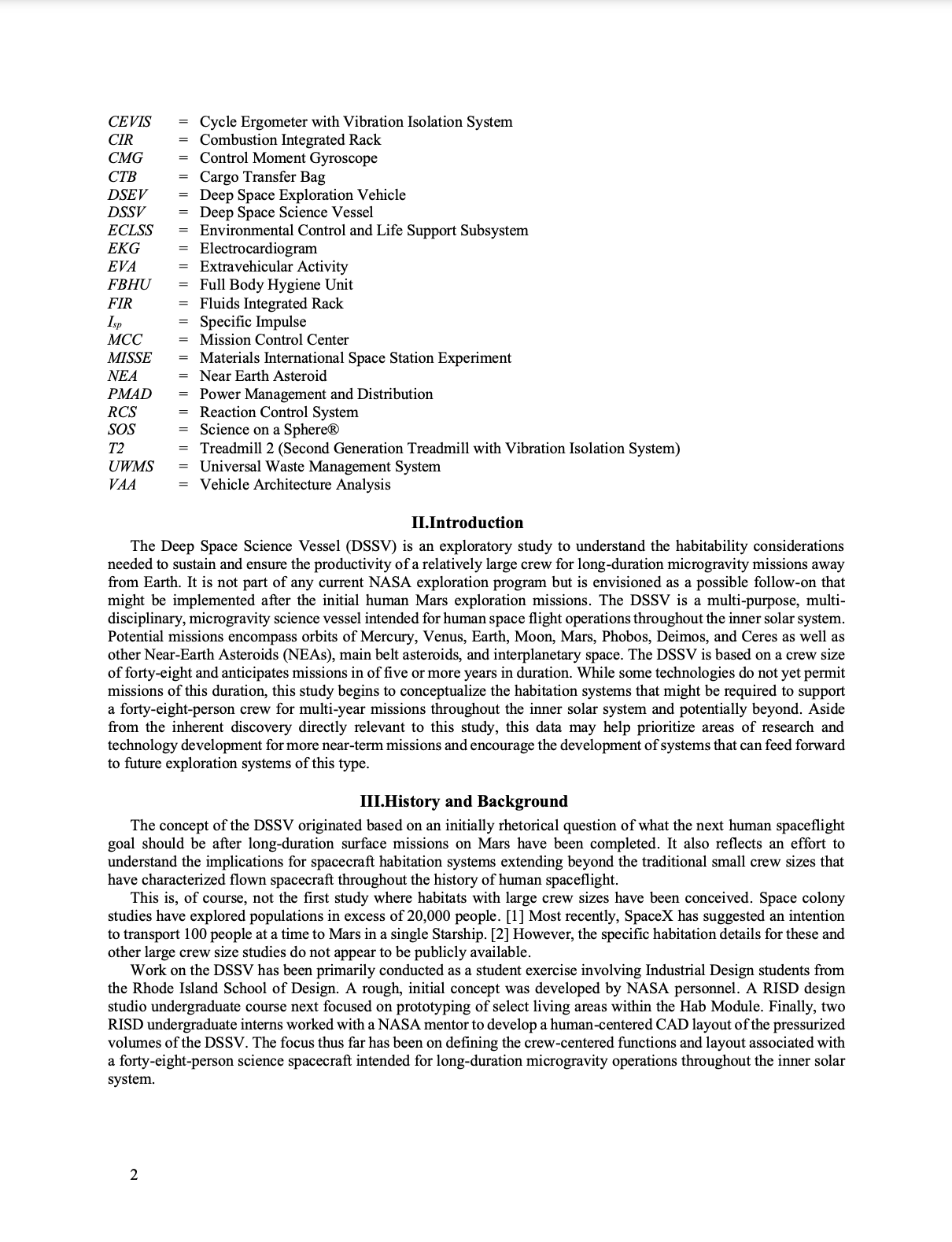
Notes on the Process

The goal of this project was to create a full concept of the DSSV within 10 weeks. In order to achieve this goal within our accelerated timeline it was vital to balance in-depth research with rapid iteration. To do this I worked with my colleagues to create a core practice of consistent team communication and collaboration.
1. | Flexible Mindset
2.| Ability to quickly synthesize research and find appropriate level of detail
3.| Rapid modeling - while working with human figures (99th - 5th percentile)


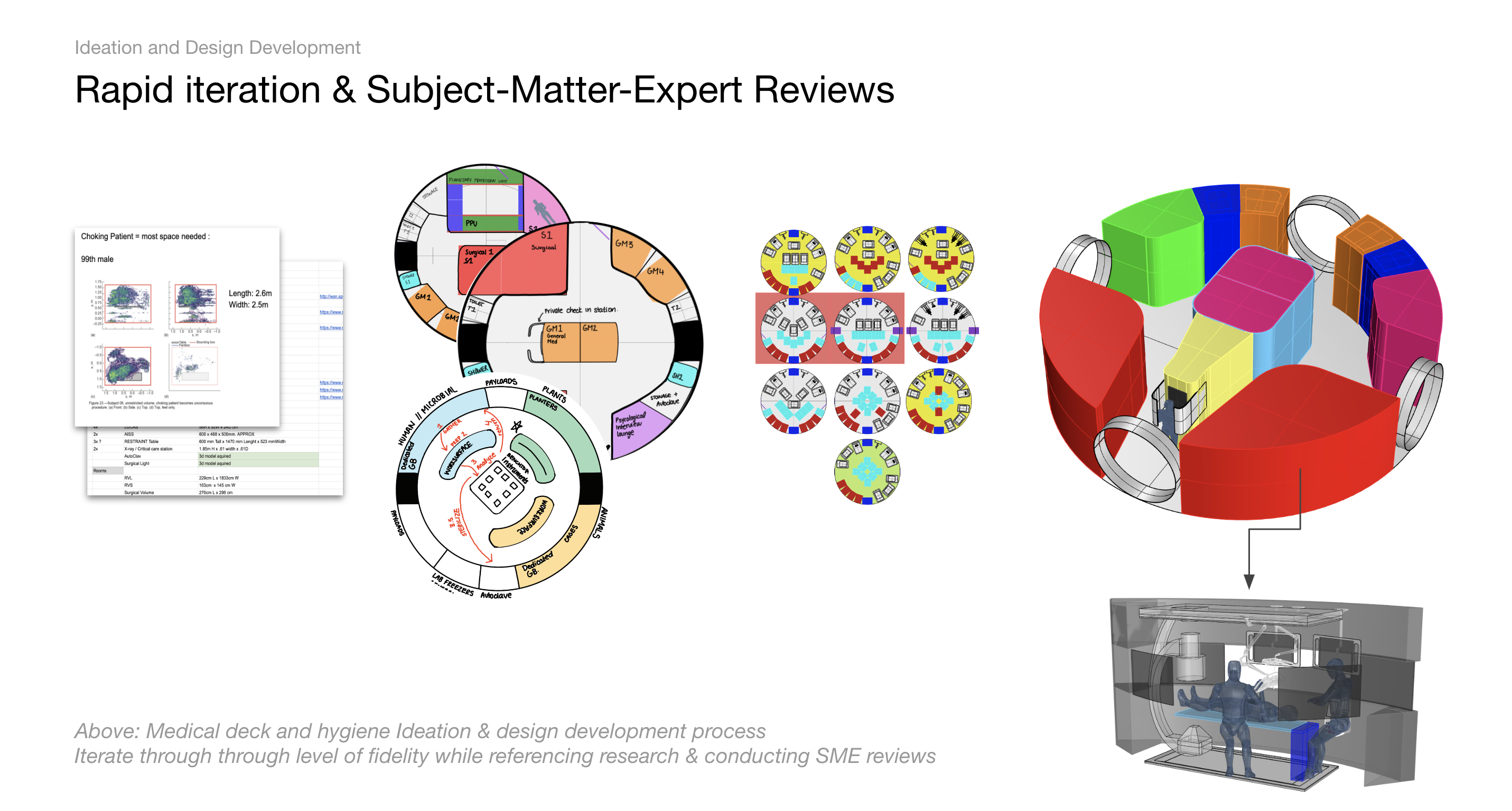
Deck Overviews
![]() Hygiene Deck
Hygiene Deck

The Hygiene Deck utilizes the UWMS, which is a recently developed waste management system. This deck also houses conceptual full body hygiene rooms and handwashing stations that use negative pressure, downward airflow, and controlled amounts of water. This allows the crew to maintain a consistent level of hygiene throughout their five year mission.
99th % male shown for scale
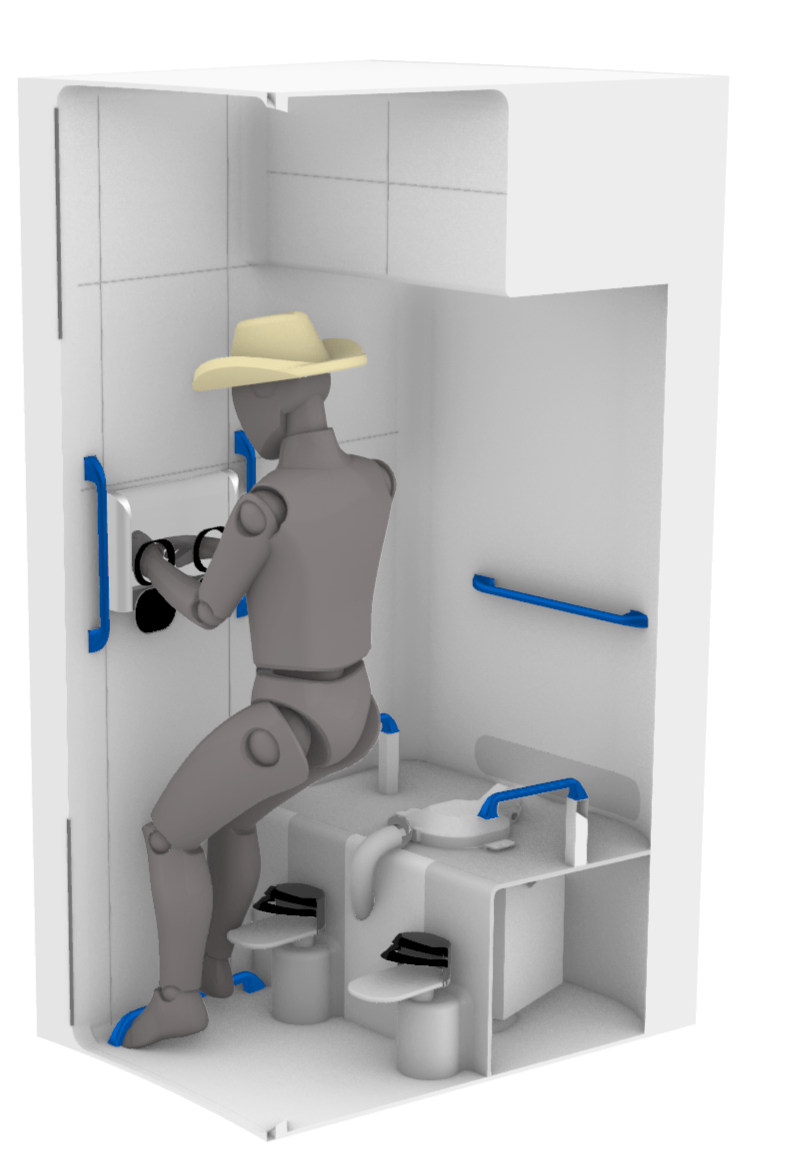

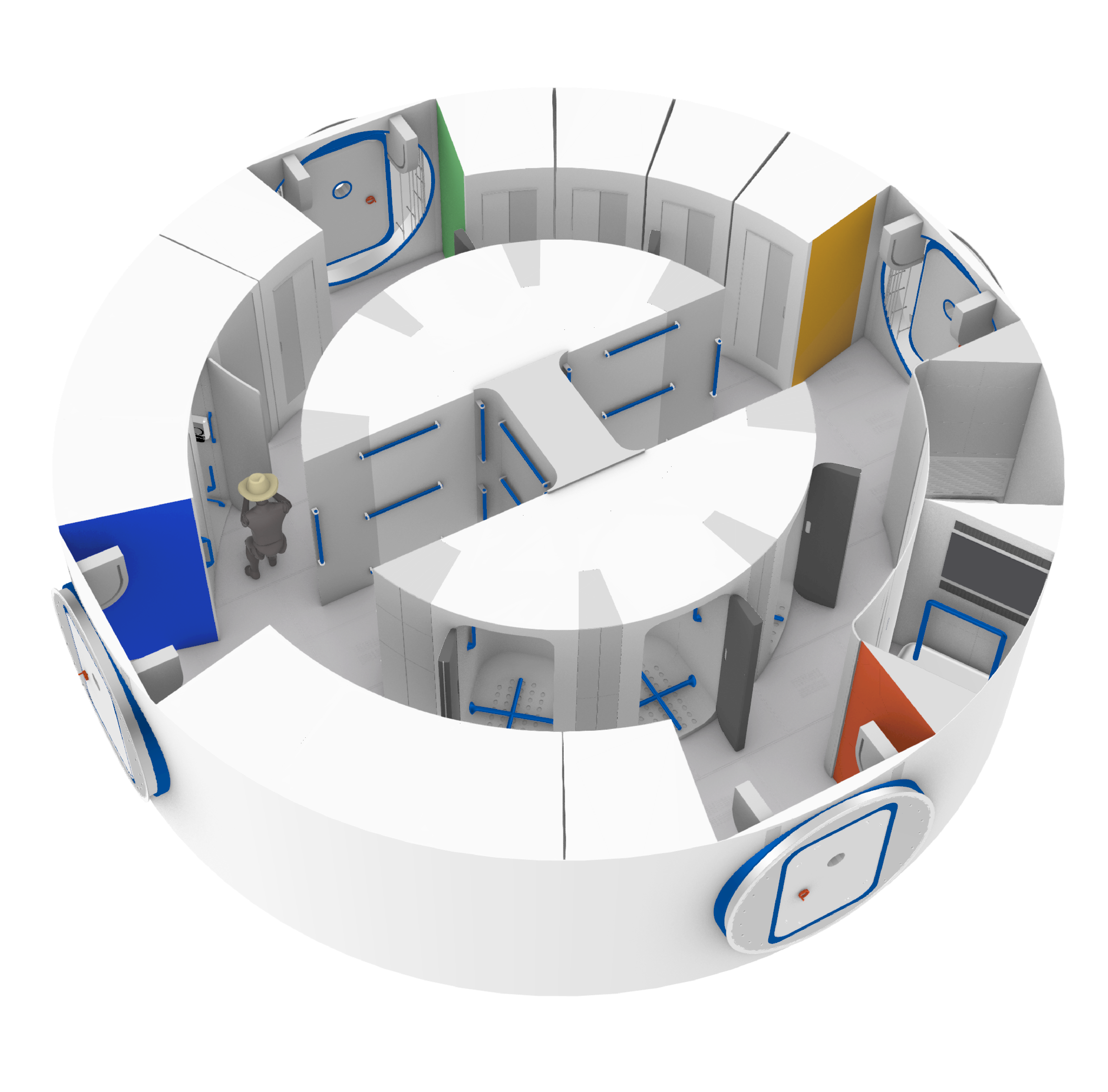
![]() Workout Nodes
Workout Nodes
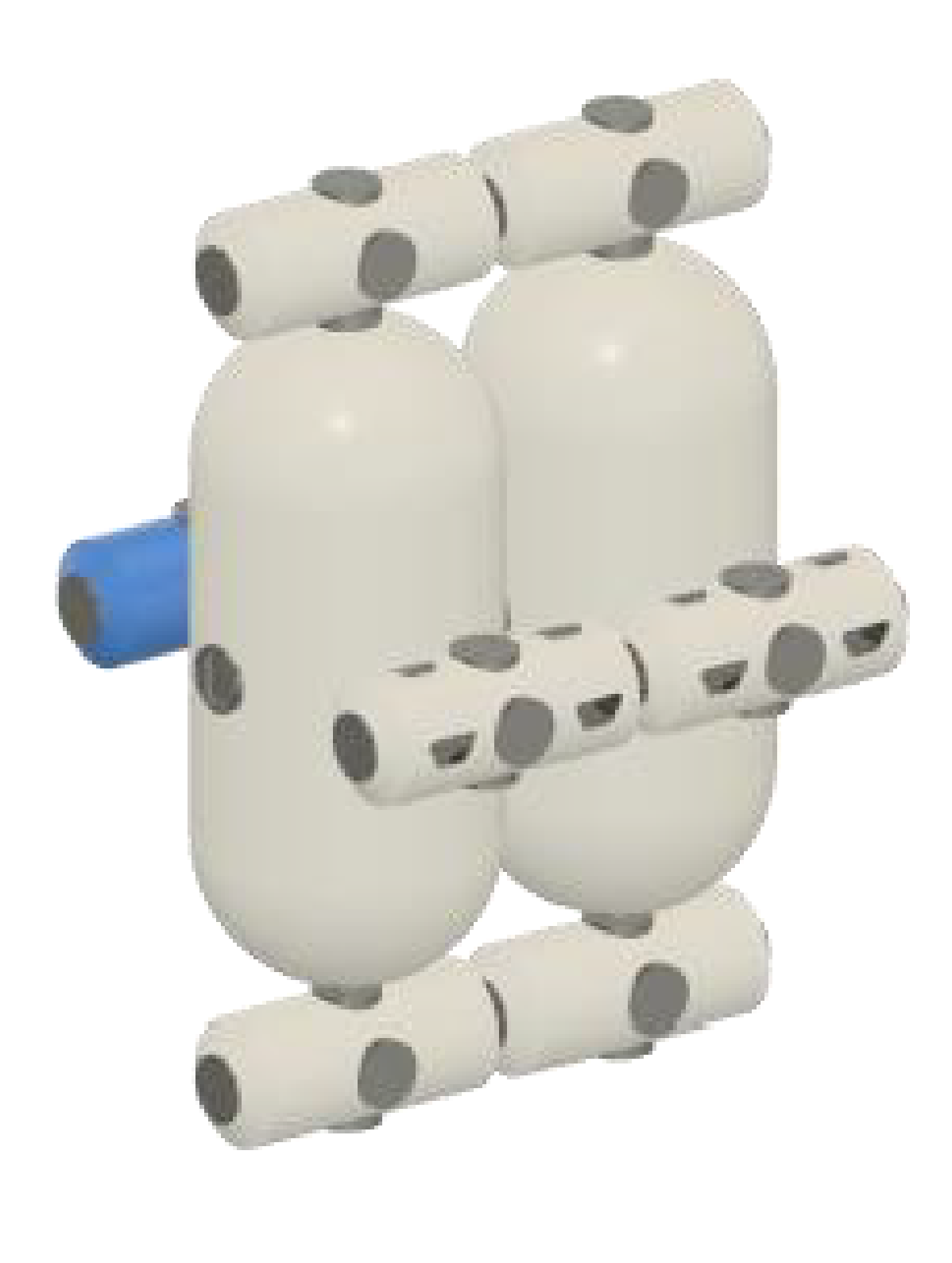
Working out is a daily routine that is essential to the DSSV crew’s physical health. The workout nodes house 6 ARED, 3 CEVIS and 3 T-2 machines. Each with separated booths for privacy and odor control. There are windows located in the workout nodes as well as several other places on the vessel.
The ability to spend time every day looking past the walls of the ship will provide the DSSV crew with additional motivation to maintain, and hopefully enjoy, their rigorous workout routine.
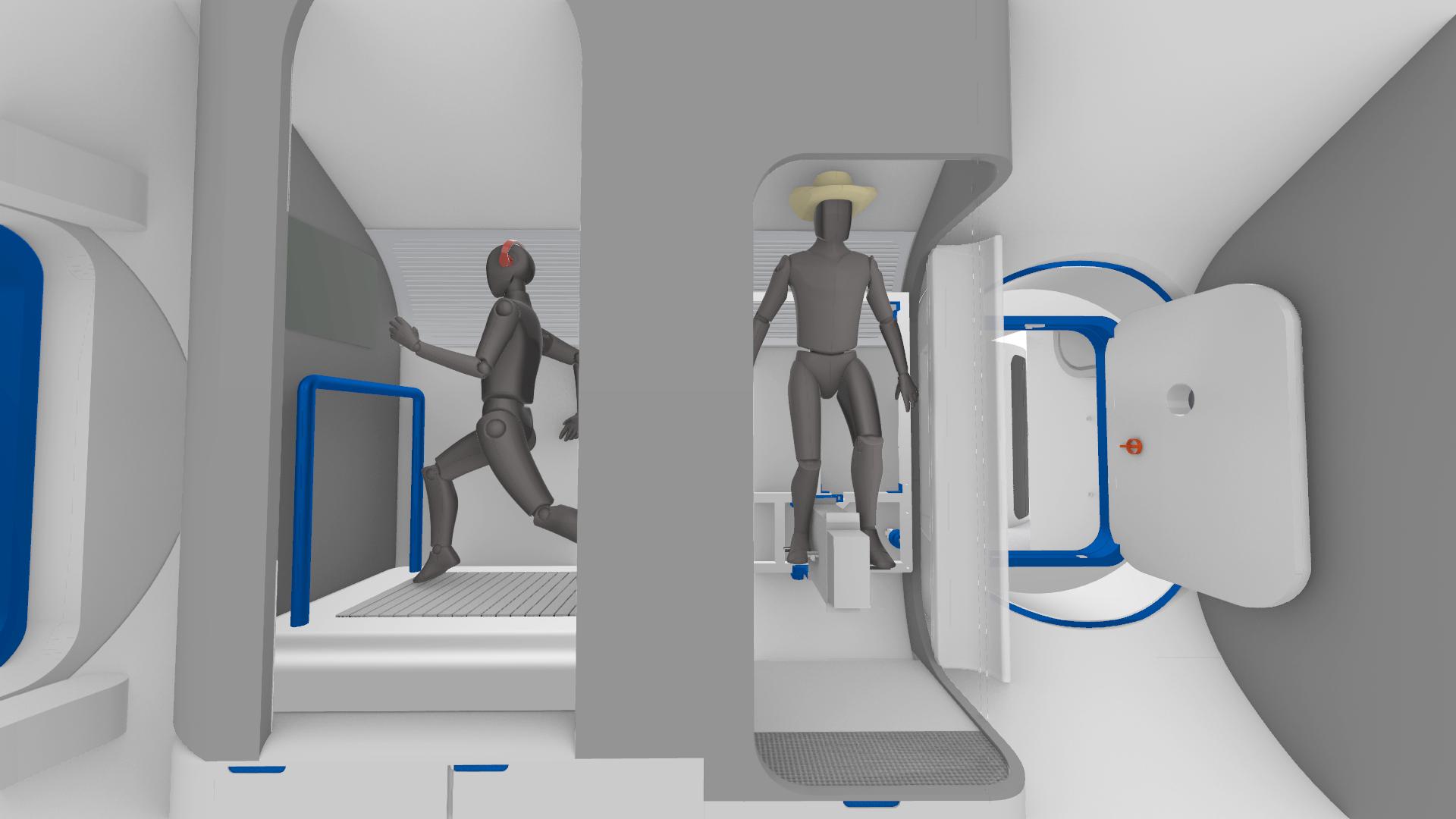
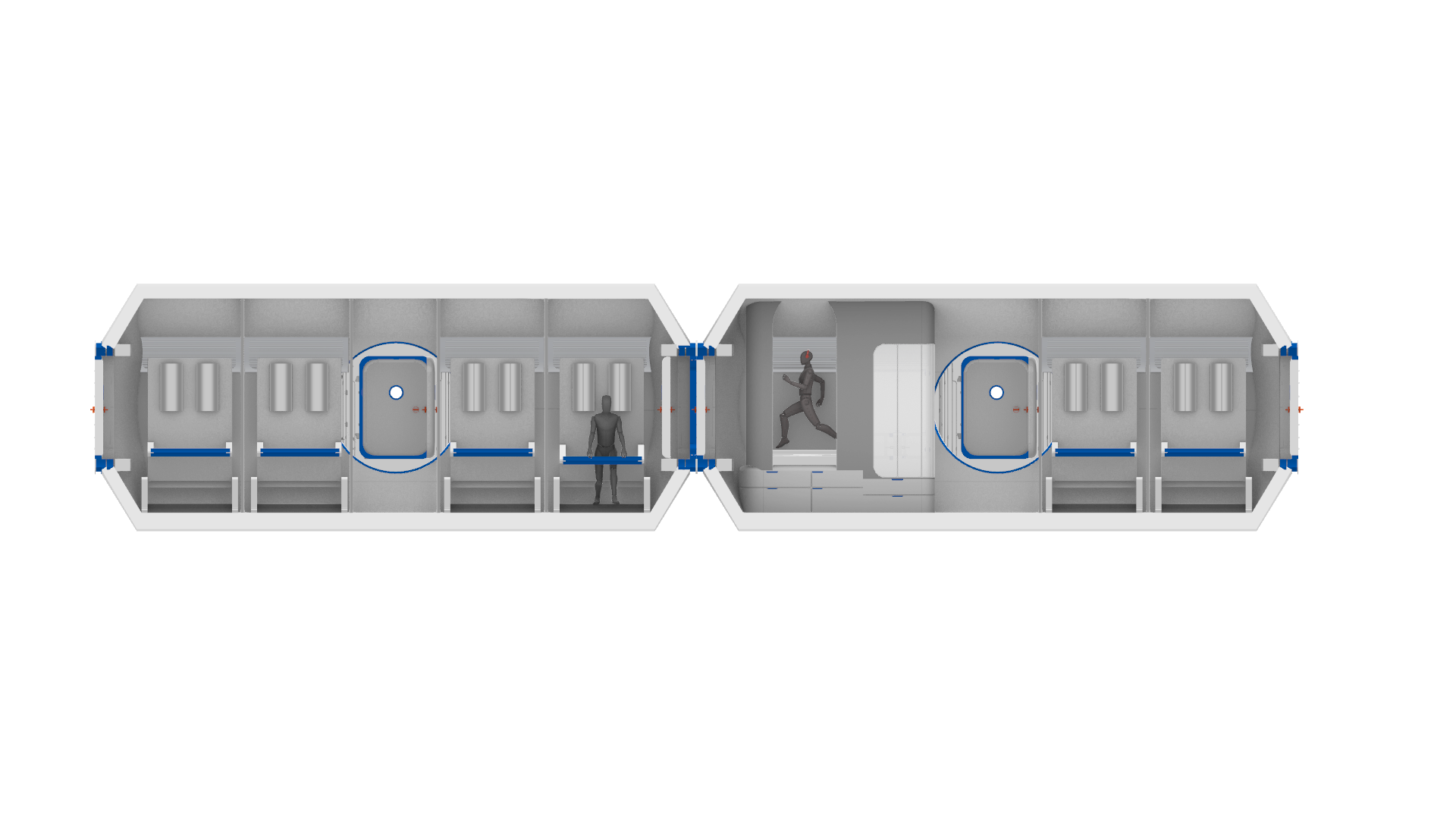
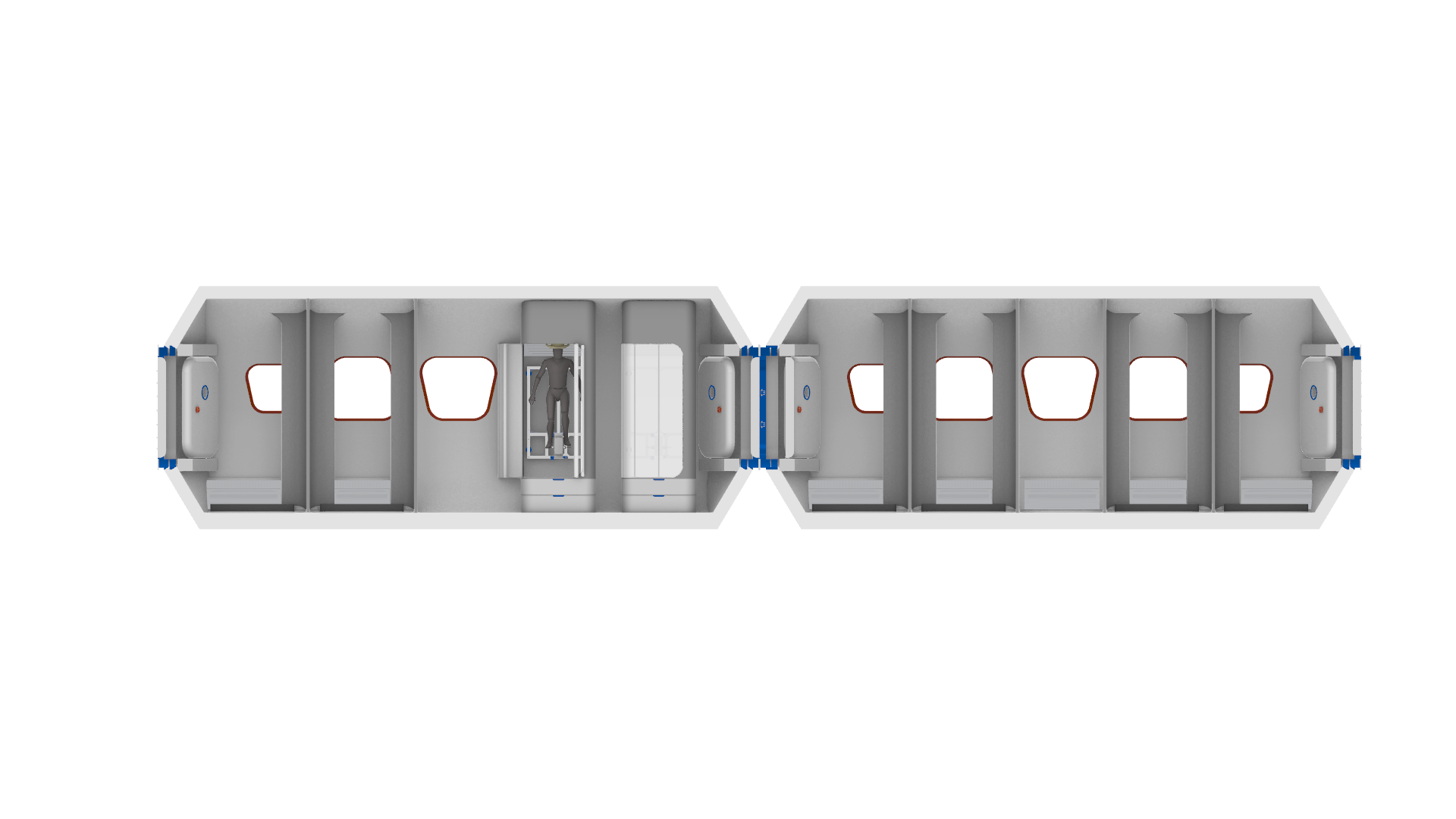

Galley Dome
The Galley Dome functions as a wardroom and possible full crew movie theater as well as a galley. It is designed to accommodate all 48 crewmembers at once for occasional full crew meals.
When considering a long duration mission with a large crew compliment it is important to consider how to create infrastructure that facilitates community and communication. This will ultimately allow the crew to work together more efficiently and form strong bonds throughout their 5 year mission.
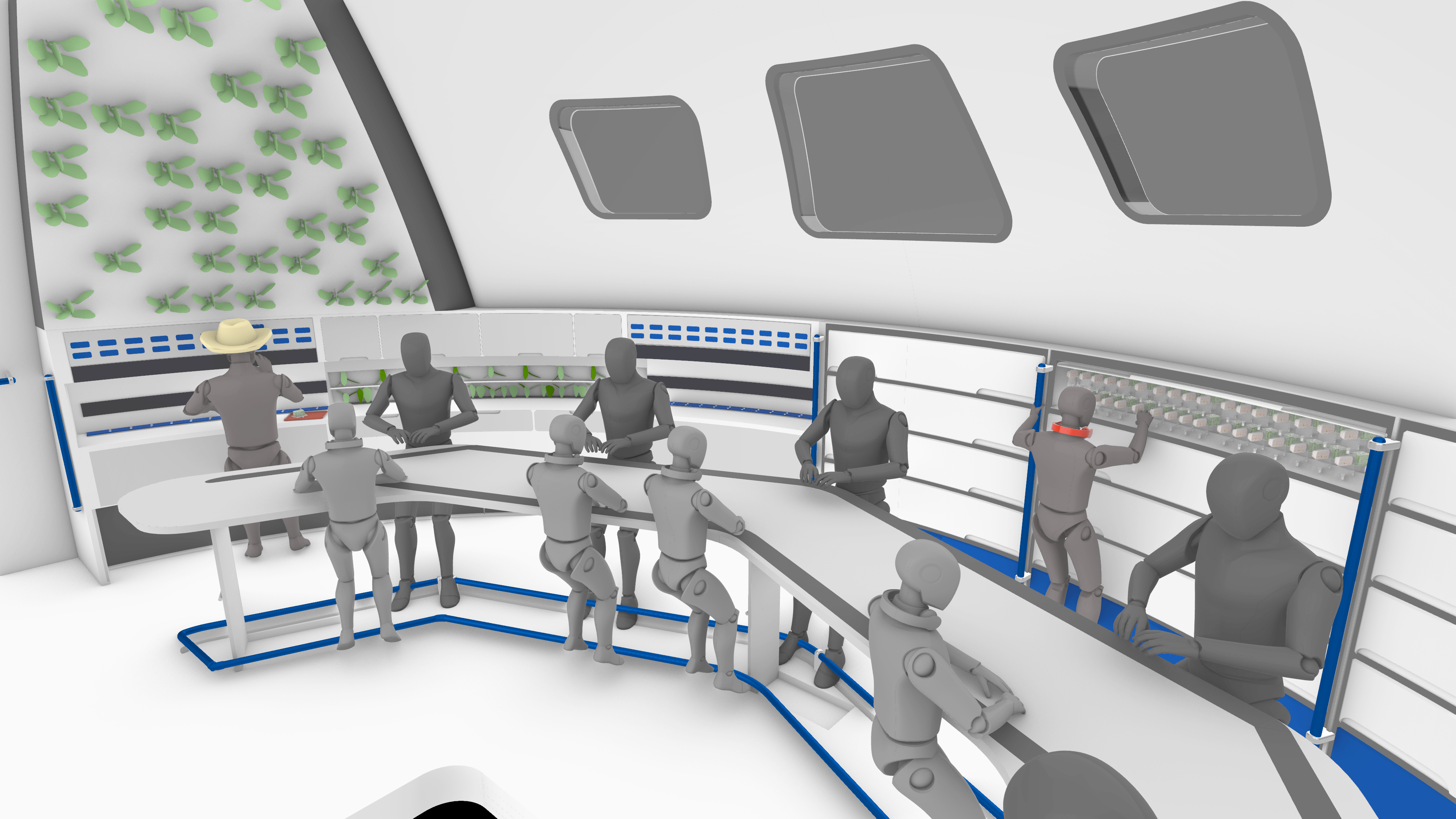


![]() Mission Operations Node
Mission Operations Node

The Mission Operations node contains mission control as well as an adjustable crew breakout meeting space. Mission control consists of seven officers each with their own console. I designed the consoles for ease of use while in neutral body position (the natural position the human body takes in microgravity).
I arranged the consoles to maintain officer hierarchy, transition space, and simultaneous viewing of overhead displays. During this process, I worked closely with Dr. Robert Howard to come up with the names and responsibilities of each mission control officer.
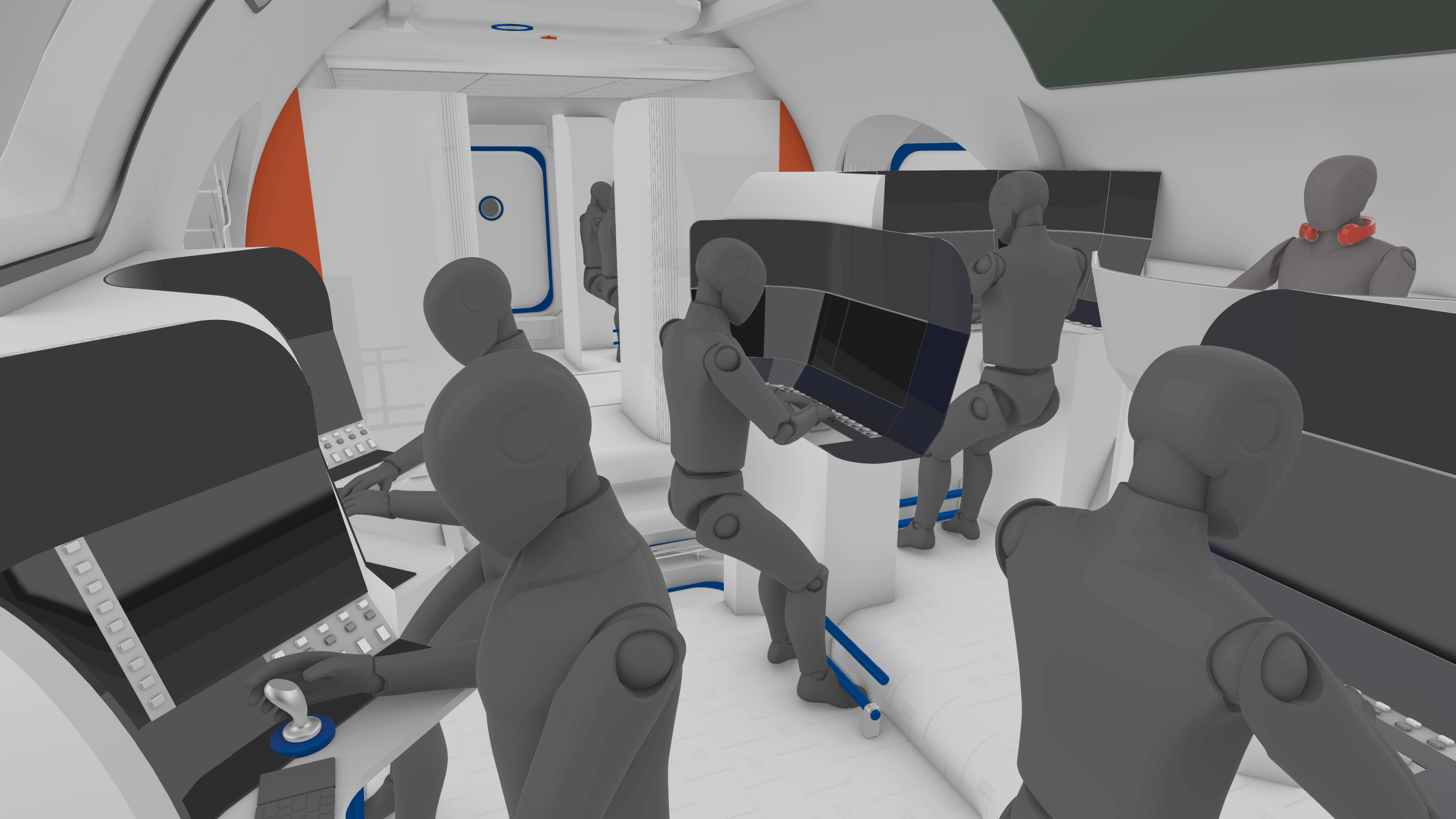

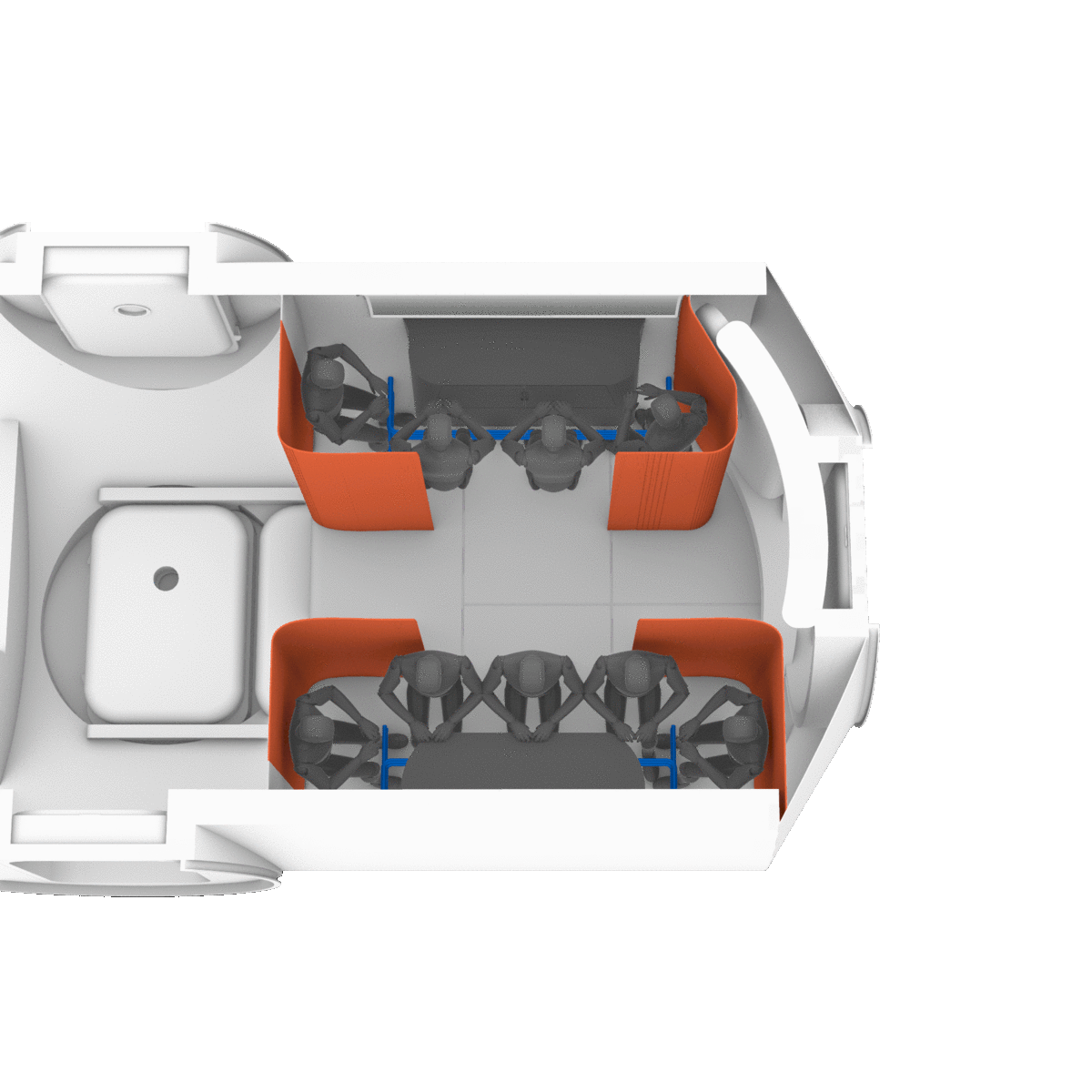
![]() Food Production dome
Food Production dome

In the Food Production Dome, I designed a conceptual tower for cultured meat production (lab grown meat). There are three of these towers in the dome. I contacted Uma Valeti, the CEO of Memphis Meats, a cultured meat company, to gain an insight into the volumes, materials, and hardware that would be theoretically needed for this venture. This final design could provide a 48 person crew with 5oz serving of meat each week.
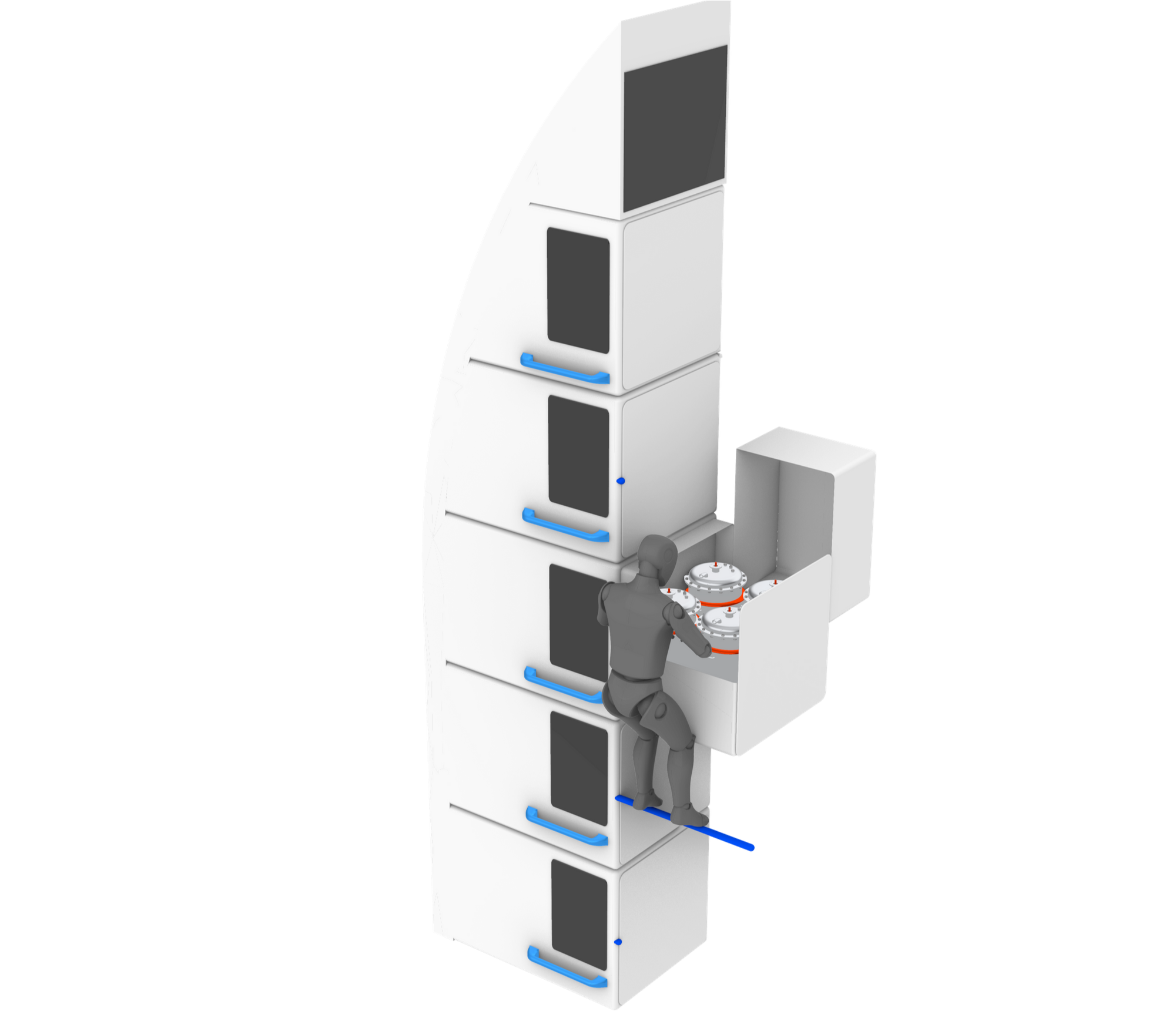
![]() Life Science Deck
Life Science Deck

The Life Science Deck is split into quarters so that human, botanical, microbial, and animal science each have their own workspaces. This deck was designed with clear sightlines so that collaboration and teamwork could occur easily. It also accommodates a presentation space large enough for the entire life science team to come together for briefings, calls back to Earth, or discussions.


![]() Medical Deck
Medical Deck

The Medical Deck is designed to have three general medical examination rooms, one psychological interview lounge, two operating rooms, and a medical stowage area. When designing this deck I incorporated technology used on the ISS as well as technology used in hybrid operating rooms on Earth.



Excerpts from Final Presentation






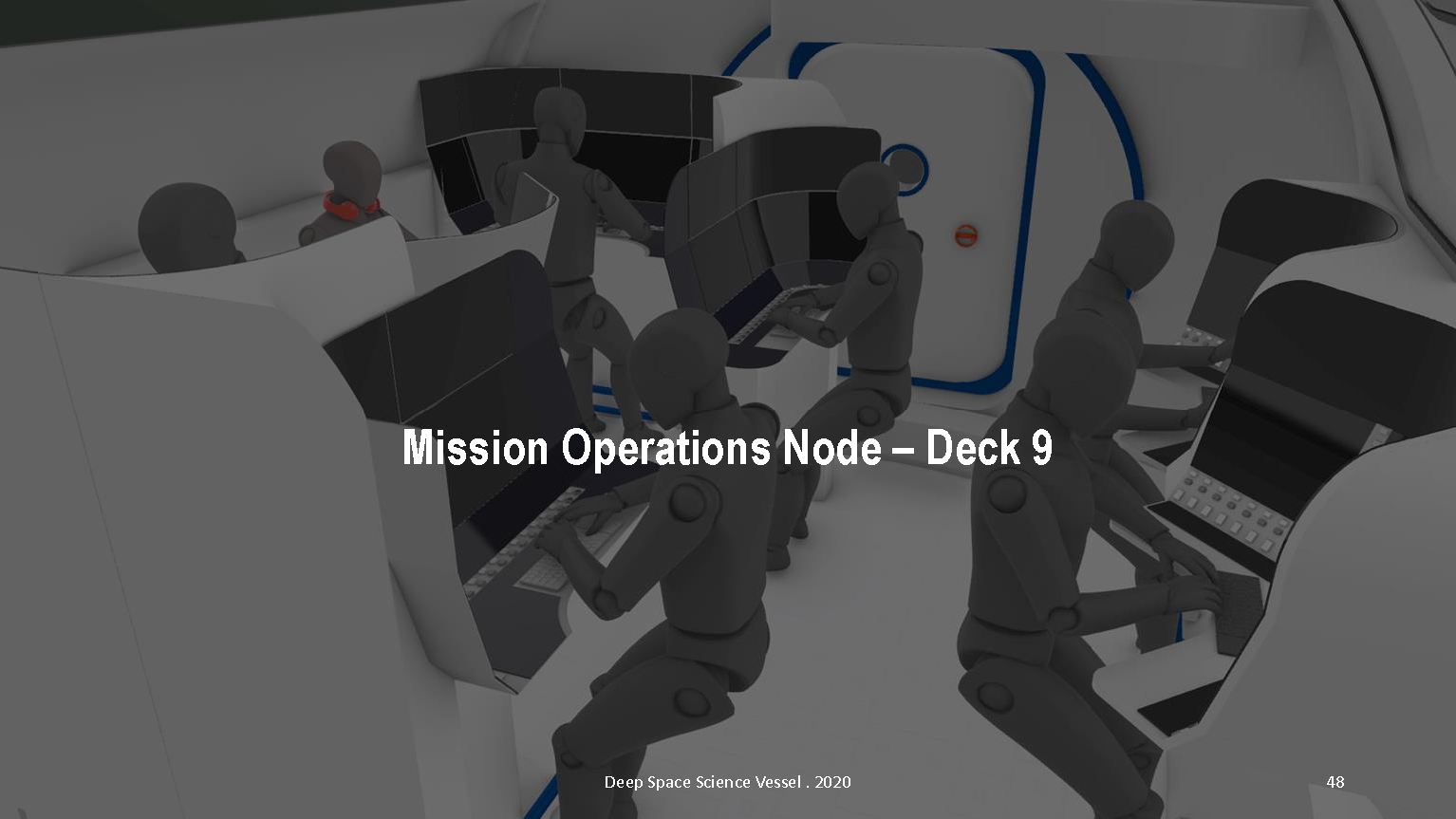
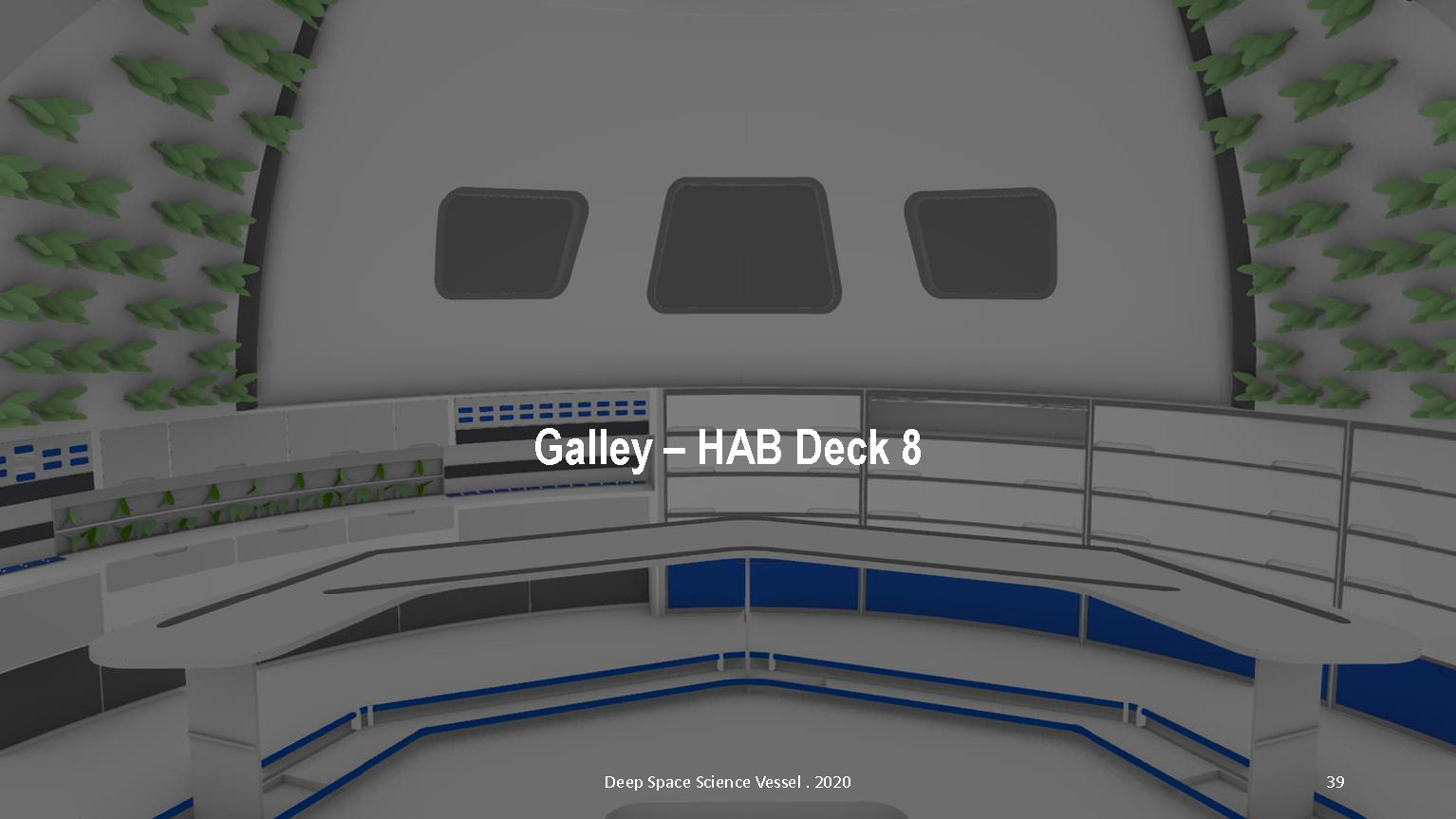
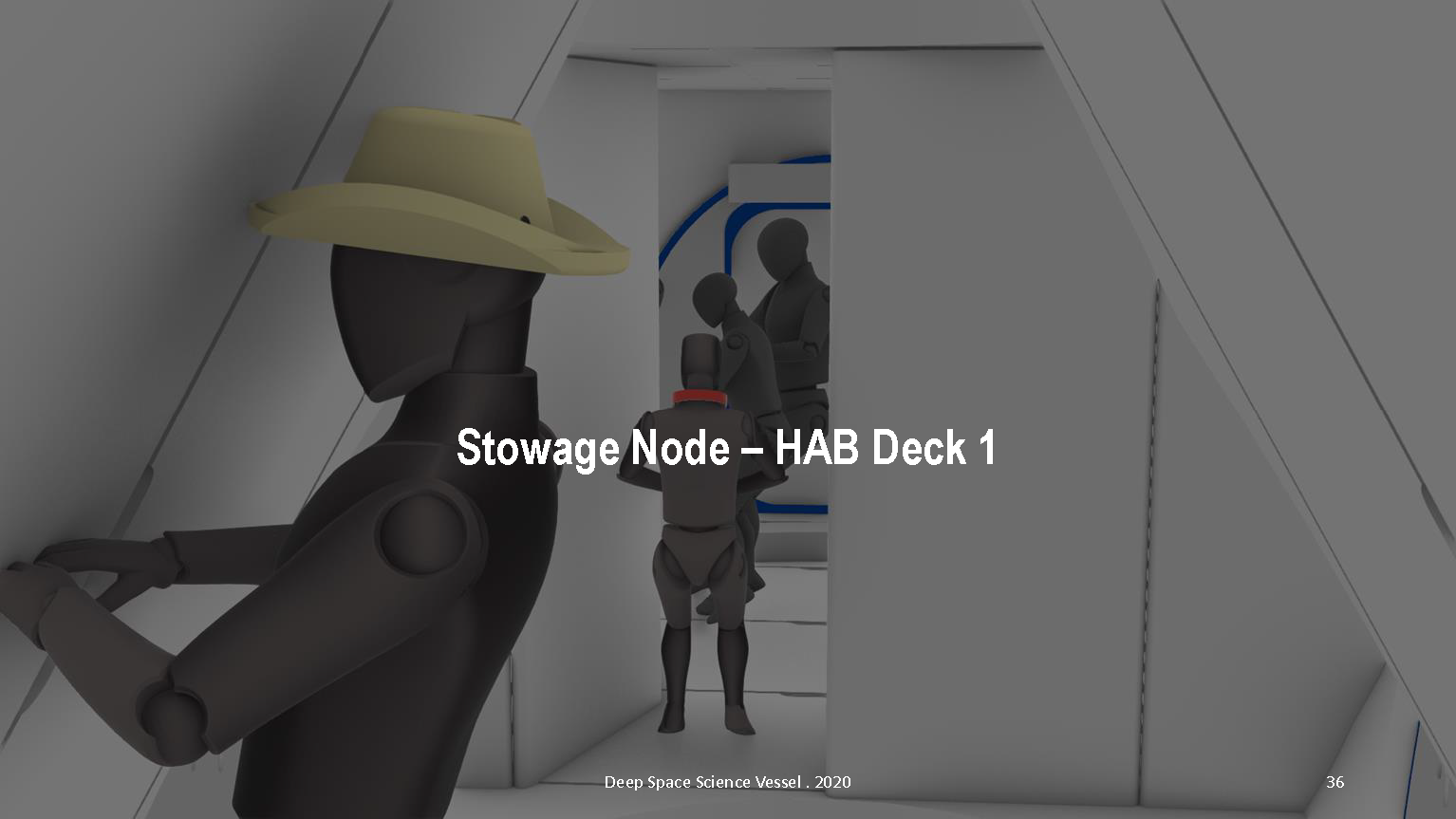
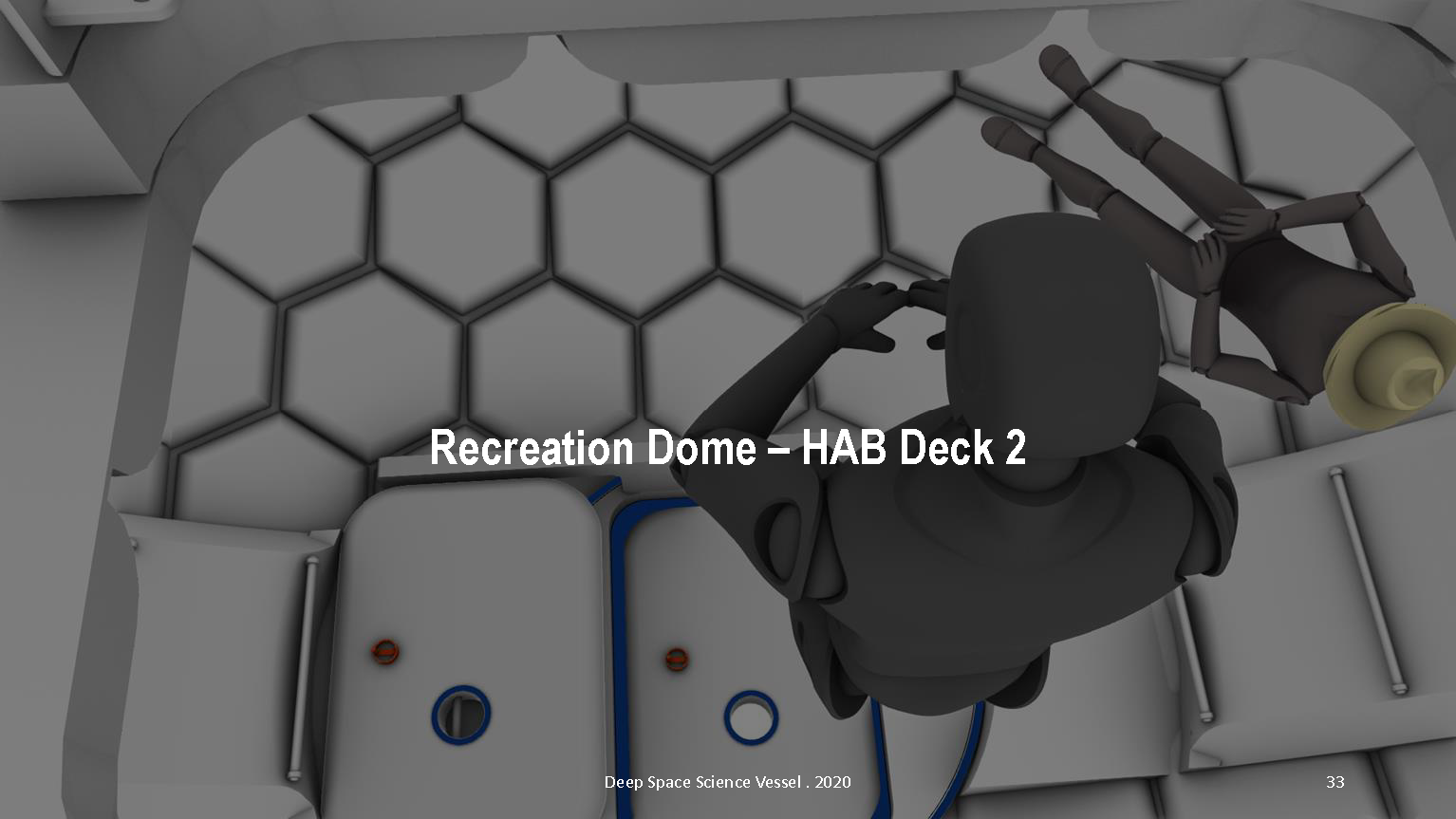

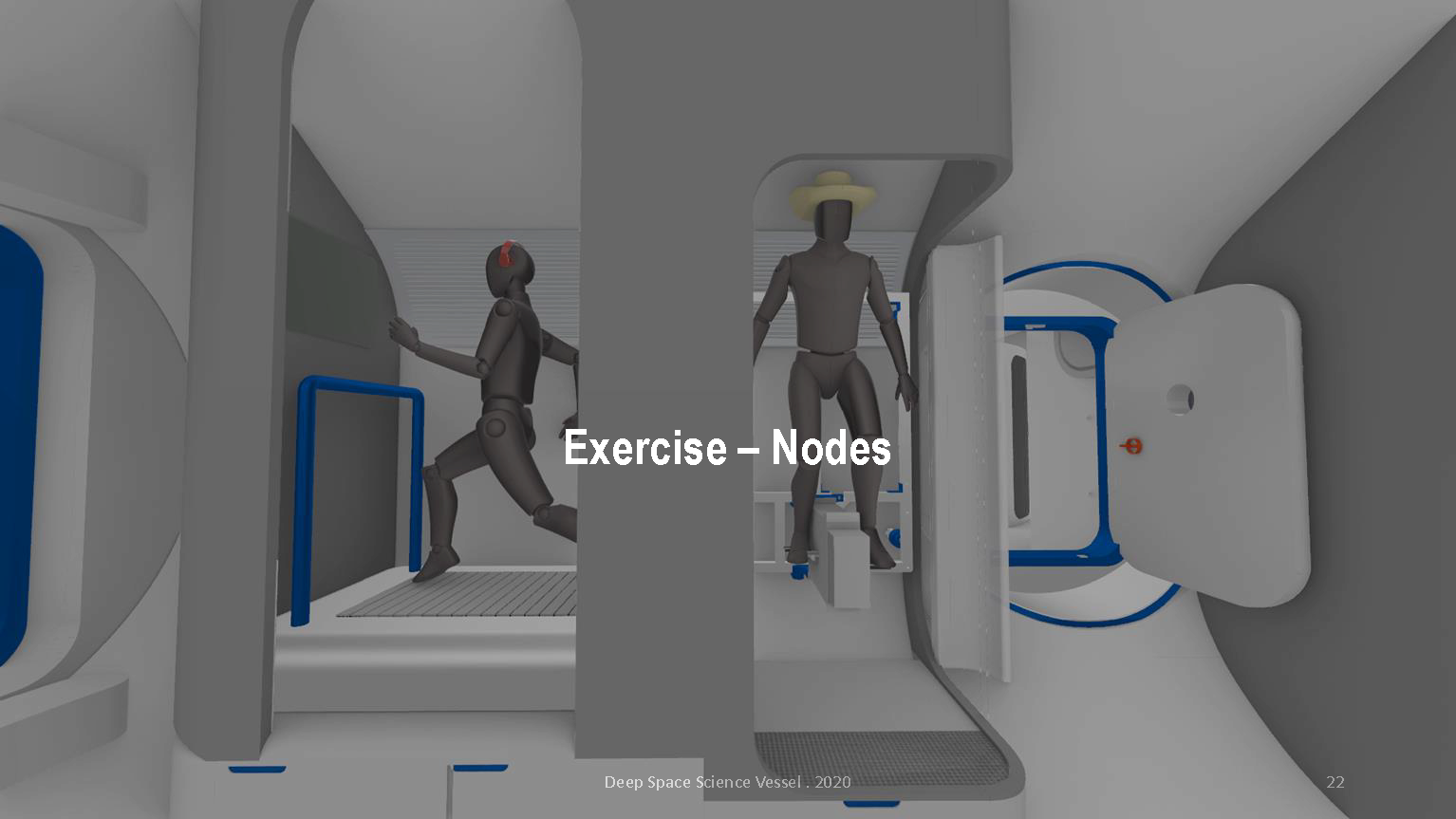


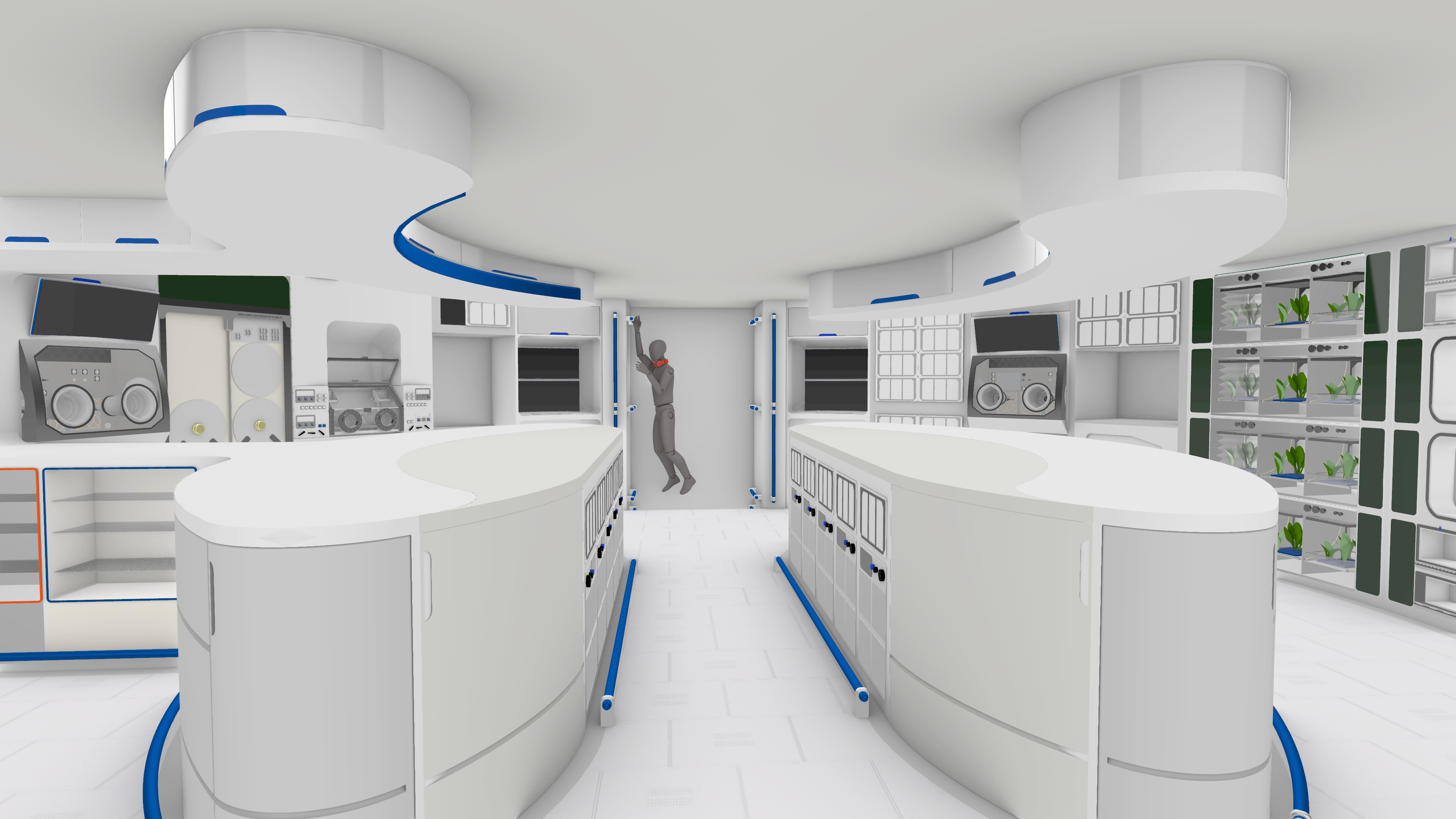
Reflection
Interning at the Center for Design and Space Architecture was a phenomenal experience. I not only learned a plethora of technical skills but also how human centered design plays a vital role in advocating for the needs of astronauts. Working in a team of both designers and engineers was an invigorating experience that taught me how to hone my communication, research, and ideation skills.
Email me at Neha@Sajja.com if you are interested in seeing the full presentation or learning more details.
Email me at Neha@Sajja.com if you are interested in seeing the full presentation or learning more details.